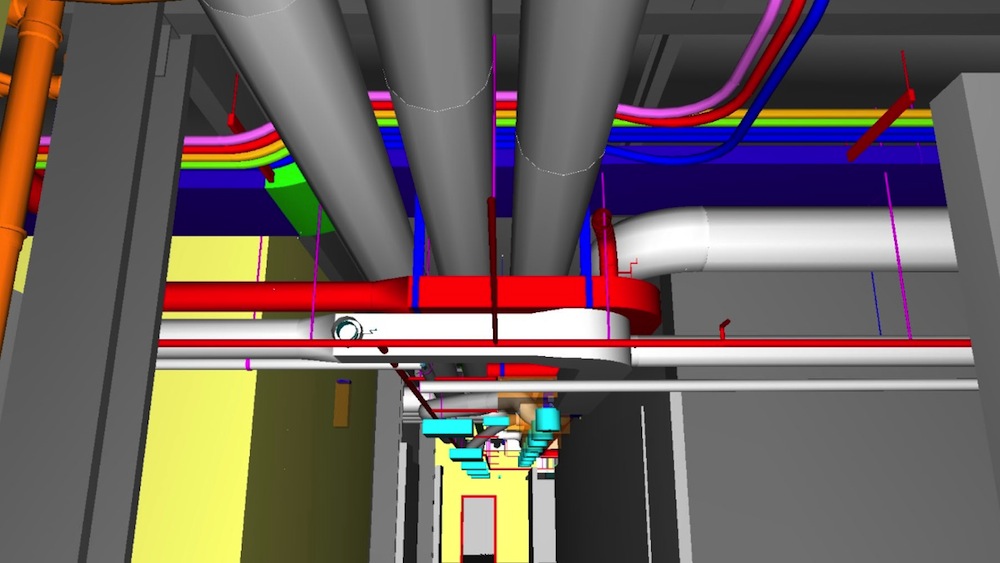As you are well aware, BIM is steadily gaining momentum here in the US and abroad. In fact just this week I read a press release about a major city agency standardizing their BIM practices. You know as well as I do that when a city or municipality starts talking about standardizing on "future technologies," critical mass isn't far behind.
Yet even as more and more owners, agencies and firms are turning to BIM, it’s impossible to ignore the fact that many of these organizations are still struggling with BIM implementation. Case in point – I recently received an email from an engineer who follows this blog. He suggested that I devote some time discussing a common challenge faced by BIM adopters – the fact that implementing BIM often means an organization finds the need to invest in more powerful hardware. After all, if you’re building your BIM model to contain all the information necessary to have a meaningful discussion, you’re going to need a hefty computer to run it all smoothly. And these added costs can make BIM implementation extremely expensive, and even delay adoption for some organizations.
Yet this engineer’s suggestion was not to spec out hardware requirements for running BIM. Instead, he proposed that users only serve up the parts of the model they need, when they need them, therefore allowing computer specifications to be dictated by the work a specific individual does with the model. This reader’s solution made me wonder if this was still BIM or just the “M” of BIM. He argued that it was definitely still BIM since his solution wasn’t removing BIM data, but offering a more efficient way of visualizing it.
All of this “model” talk was a bit heady for me, so I had to call in reinforcements to help me really understand how the industry is tackling this challenge. I posed the scenario to an industry friend whose company specializes in BIM rollout for owners and firms. We’ve had many conversations regarding BIM and PDF and the relationship between the two. He explained that the AIA offers a BIM protocol exhibit (E202) acting as a template to allow parties to determine the varying level of detail (LOD) required for their specific project. They determine upfront who is responsible for what and to the engineer’s point, leverage advancements in programs like Revit to view only what they need, when they need it. This point really resonated with me. After all, I’m always quick to point out that when it comes to communicating BIM data downstream to those on the jobsite, PDF and especially 3D PDFs, are a great tool for sharing relevant information in an easy to consume manner.
So with all of this in mind, I am now coming to you for your opinions and expertise. How are you managing the challenges of hardware limitations? What other challenges are you facing in the quest for a better project deliverable via BIM? Do you care to add your two cents to this discussion?
More from Author
Sasha Reed | Dec 15, 2017
Future vs. current state of construction innovation: How will we make the leap?
Looking beyond today’s constraints to the possibility of what “could be” is a key characteristic of those defining and delivering innovation to design and building firms across the globe.
Sasha Reed | Sep 19, 2017
BIM vs VDC…how the US and the UK differ in approaching digital project delivery
In this four-part series, Bluebeam VP Sasha Reed sat down with industry experts to examine the need for defining and understanding digital workflows and data management throughout the design and construction project lifecycle.
Sasha Reed | Jul 19, 2017
Introducing StrXur by Bluebeam
Our goal is to present unique perspectives you may not be able to find anywhere else.
Sasha Reed | Jul 13, 2017
Defining the future by mastering the art of change
From my perspective, what separates organizations thriving in the digital revolution from those who are not boils down to one thing: leadership.
Sasha Reed | Mar 15, 2017
Incentivizing change: Show me the money
Who is succeeding, and on what terms? And what will it take for everyone to experience the benefits of that success?
Sasha Reed | Oct 4, 2016
The talent shortage: Will the training the AEC industry desperately needs arrive in time?
As the construction industry bounces back from the Great Recession, an entirely new class of tech-savvy construction professionals has been created, and the supply of these highly skilled, tech-proficient pros has been quickly exhausted.
Sasha Reed | Jul 11, 2016
Construction Disruption at AECX: Technology, hackathons and the promise of change in LA
The lead up to AECX featured a discussion providing insight into the current state of the AEC technological revolution by exploring opportunities, challenges and choices AEC pros face.
Sasha Reed | Jun 23, 2016
Implementing Change: The Five Biggest Mistakes to Avoid
Two truths from the jobsite: 1) The best part about uncovering a problem is discovering its solution, and 2) The worst part about discovering the solution is implementing it.
Sasha Reed | Jun 9, 2016
With all these sharks in the water… (No Predictions Here...Part 2)
Rather than fighting to control the proliferation of apps, perhaps we should be training our eyes to look for signs of long-term viability among all the fins in the water
















